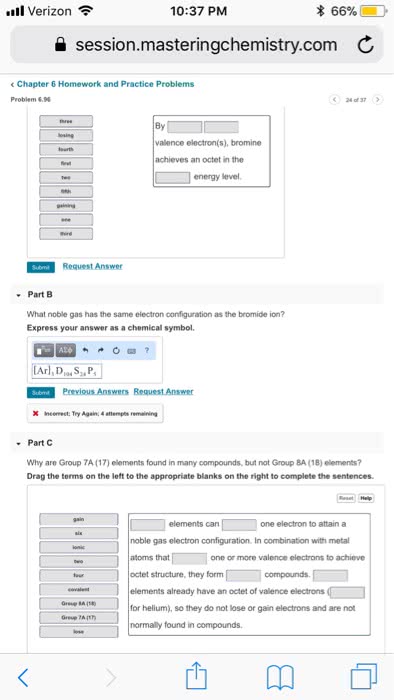CHEM101 Lecture Notes - Lecture 9: Joule, Diamagnetism, Ionic Compound

LEC 09
Electron Configuration of Monatomic Ions:
Elements at either end of period gain or lose electrons to attain a filled outer level. Resulting ion
will have a noble gas electron configuration and is said to be isoelectric with that noble gas
Metals tend to lose valence electrons to form cations
oMain group metals lose valence electrons to attain noble gas configuration (cation)
oMain group non-metals gain valence electrons to attain a novel gas configuration
(anions)
Transition Metal Ions: (p-block metals)
Transition metal atoms can form several cations, with all the ns electrons removed first,
followed by some of its (n – 1)d electrons
Their metal ions rarely attain a noble gas configuration
Pseudo-Nobel gas configuration: empty the highest energy level (remove ns and np electrons);
keep a filled (n-1)d sublevels
Inter Pair Configuration: removed np electrons; keep ns2 (inert pair) and (n-1)d
Summarizing Transition Metal Ion Formation:
3d sublevel has a much lower energy tan 4s electron
First electron to be removed are 4s electron
“first in, first out” rule for 4s electron
Summarizing Ion Formation:
Main group s-block metals lose all electrons with the highest n value
Main group p-block metals lose np electrons before ns electrons
Transition (d-block metals) lose ns before (n-1)d
Non-metals gain electrons
find more resources at oneclass.com
find more resources at oneclass.com

77
CHEM101 Full Course Notes
Verified Note
77 documents
Document Summary
Elements at either end of period gain or lose electrons to attain a filled outer level. Resulting ion will have a noble gas electron configuration and is said to be isoelectric with that noble gas. Metals tend to lose valence electrons to form cations: main group metals lose valence electrons to attain noble gas configuration (cation, main group non-metals gain valence electrons to attain a novel gas configuration (anions) Transition metal atoms can form several cations, with all the ns electrons removed first, followed by some of its (n 1)d electrons. Their metal ions rarely attain a noble gas configuration. Pseudo-nobel gas configuration: empty the highest energy level (remove ns and np electrons); keep a filled (n-1)d sublevels. Inter pair configuration: removed np electrons; keep ns2 (inert pair) and (n-1)d. 3d sublevel has a much lower energy tan 4s electron. First electron to be removed are 4s electron. First in, first out rule for 4s electron.


